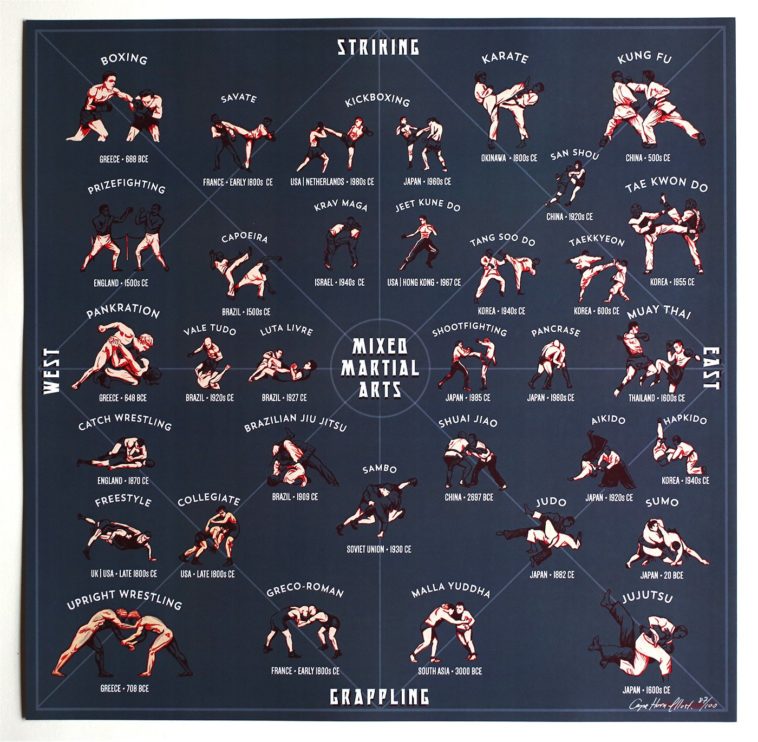The Development And Progression Of Martial Arts: Looking Up Its Origins From Ancient Times To Contemporary Practices
The Development And Progression Of Martial Arts: Looking Up Its Origins From Ancient Times To Contemporary Practices
Blog Article
Web Content Created By-Svenstrup Clements
Enter the world of martial arts, where old origins and modern methods collide in an electrifying trip of self-control and self-discovery.
As you explore the background and evolution of this exciting art type, prepare to be astounded by the cultural influences, technological improvements, and extensive viewpoint that have formed it over centuries.
From the field of battles of ancient people to the training premises of today, martial arts have actually stood the test of time, regularly adapting and expanding.
Each strike, each movement, brings with it the weight of many years of tradition and knowledge, passed down via generations. This is a tale of resilience, of warriors that looked for not just physical prowess, but likewise self-confidence and consistency.
Join us on this amazing exploration as we reveal the tricks, the legends, and the transformational power of martial arts.
Prepare to be inspired, tested, and permanently transformed by https://www.reuters.com/legal/transactional/trump-new-york-criminal-probe-has-new-prosecutor-after-lawyers-quit-2022-02-25/ and advancement of martial arts.
Social Influences on Martial Arts
As you check out the history and evolution of martial arts, you'll rapidly find the remarkable ways in which cultural impacts have shaped these fight techniques.
From the old worlds of China and India to the extra recent advancements in Japan and Brazil, martial arts have been greatly influenced by the cultures in which they came from.
As an example, Chinese martial arts, such as Kung Fu and Tai Chi, are deeply rooted in the ideology of Taoism and the idea of Yin and Yang.
In contrast, Japanese martial arts, like Martial arts and Judo, reflect the samurai warrior customs and the values of discipline and honor.
Similarly, Brazilian fighting style, Capoeira, combines aspects of African dancing and music, reflecting the cultural heritage of African slaves in Brazil.
These cultural influences not only offer each fighting style its unique qualities however also provide a deeper understanding of the historic and social contexts in which they developed.
Technological Innovations and Martial Arts
With the surge of sophisticated weaponry and ingenious training devices, you've had the ability to boost your skills and adapt to the ever-changing fight landscape.
Technological innovations have actually changed the means martial arts are exercised and shown. Virtual reality simulations now enable you to learn sensible battle situations without the danger of physical injury. High-speed cameras record every relocation, allowing you to assess and ideal your strategies. Wearable tools check your heart price, breathing, and muscular tissue activation, giving instantaneous feedback on your performance.
In addition, the advancement of specific equipment, such as resistance bands and dexterity ladders, has enabled you to enhance your speed, toughness, and dexterity. These technological developments have not just made training extra reliable but have likewise pushed the borders of what is possible in martial arts, enabling you to reach new elevations in your method.
The Philosophy and Concepts of Martial Arts
The ideology and principles of martial arts are deeply rooted in shaping your mindset and instilling self-control, focus, and regard in your technique.
1. Attitude: Martial Arts shows you to develop a strong and resilient attitude. It allows you to get over difficulties both on and off the floor covering, pushing your limitations and persisting when faced with difficulty.
2. Self-control: Martial Arts needs discipline and self-constraint. Via regular training and adherence to strict guidelines and strategies, you learn to manage your impulses and create a solid work principles.
3. Emphasis: Martial Arts calls for intense emphasis and concentration. By educating your mind to be existing in the moment, you improve your capacity to respond rapidly and effectively throughout battle circumstances.
4. Regard: Martial Arts highlights regard for oneself, teachers, educating partners, and opponents. It instructs you to value the skills and experiences of others, promoting a feeling of sociability and sportsmanship.
Verdict
Congratulations on completing your journey via the fascinating globe of martial arts! Throughout this expedition, you have experienced the abundant background and exceptional evolution of these battle techniques.
From their old beginnings to the modern techniques we see today, martial arts have been formed by cultural impacts.
The assimilation of modern technology has also played a considerable duty in changing the method martial arts are educated and practiced in the here and now day.
However, it is necessary to remember that martial arts are more than just physical fight. drug trafficking lawyer encompass extensive viewpoints and leading principles that surpass the simple act of fighting.
Take a moment to assess this obsolete journey and value how the legacy of martial arts remains to grow in the here and now, transcending time and boundaries.
